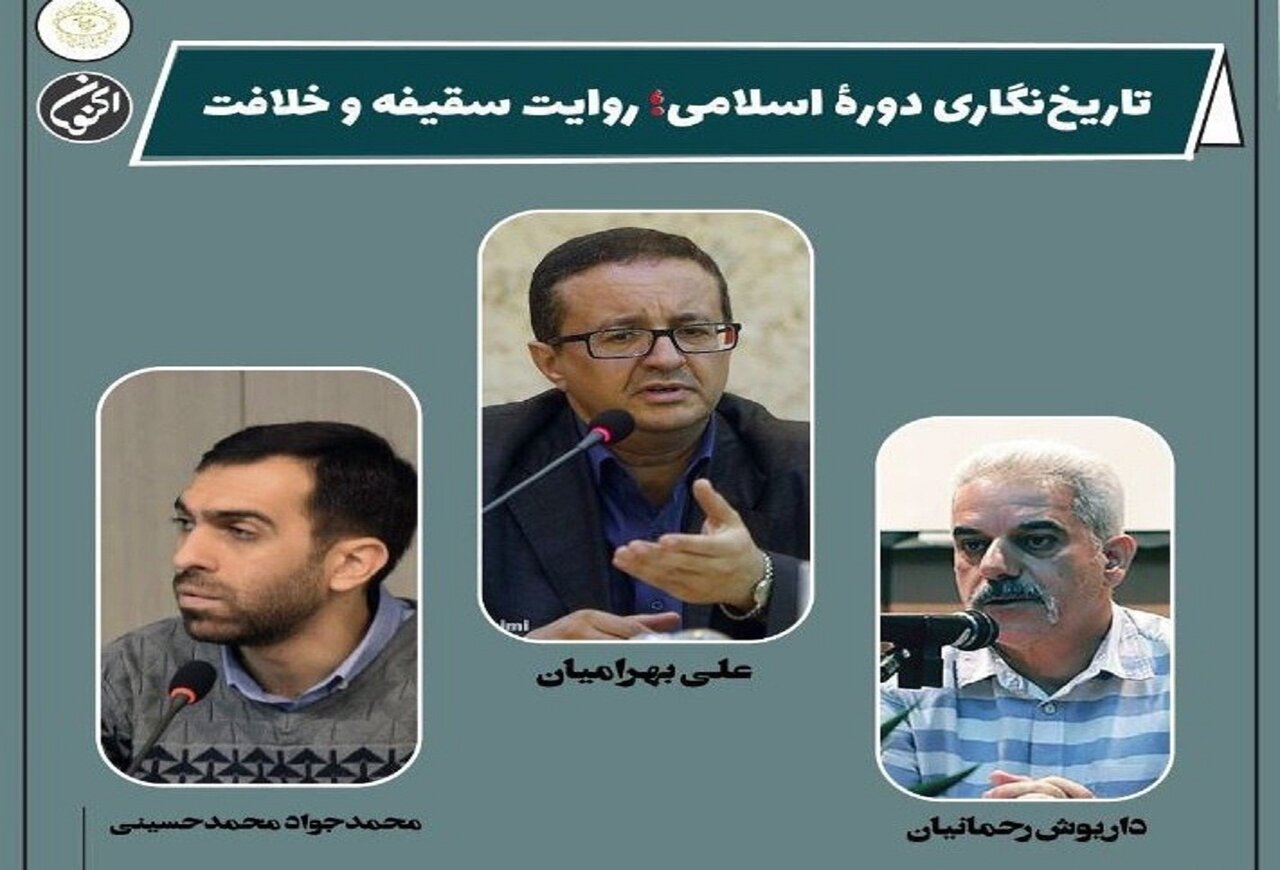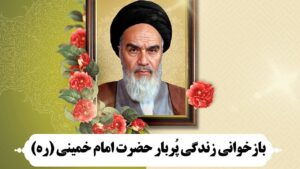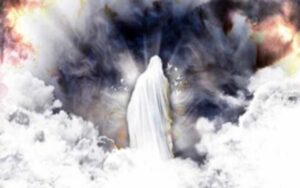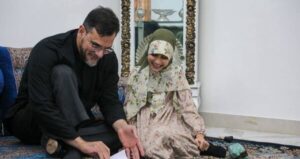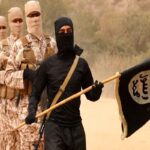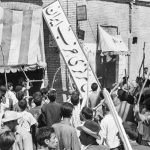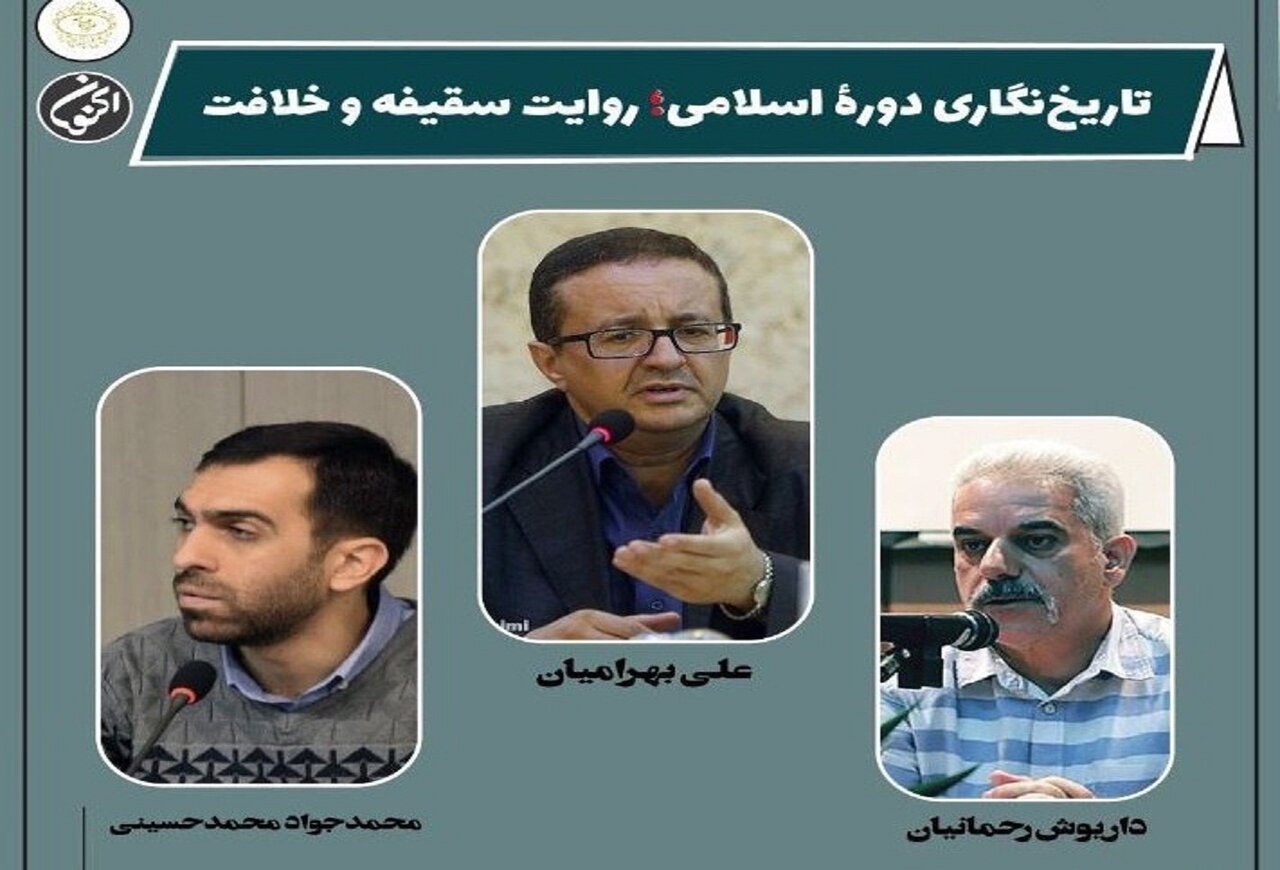
original swallow – to report Missionary thought and culture base, The speakers of this meeting were Ali Bahramian, a member of the Supreme Scientific Council of the Great Islamic Encyclopaedia and a researcher of the history of early Islam, and Dariush Rahmanian, the editor of the Quarterly of Mandannameh. This meeting was managed by Mohammad Javad Mohammad Hosseini.
The development of Islamic historiography
Ali Bahramian started the speech as follows: The written narratives that we have from the Islamic heritage of the early periods are divided into four general categories in terms of subject matter: 1. Hadith, narration and quotes of the Prophet, may God bless him and grant him peace, and his companions. 2. Tafsir of the Qur’an. 3. Words, literature and poetry. 4. News and history. The focus of my discussion is about the fourth category, news and history, which initially took place in the context of oral transmission and gradually evolved and was written and finally compiled. Historical opinion and awareness has made us the stage of editing, which is the stage of oral and written transmissions. Before an author like Ibn Ishaq, there were individual narrations in the form of scattered papers and of course oral transmissions of the life of the Prophet, and Ibn Ishaq wrote these in the form of an authored work. The beginning and Al-Baath and Al-Maghazi It has been put together and presented in the form of a machine gun. This book is organized in three chapters, in the first chapter it deals with the Prophet’s ancestors, then his birth and childhood, and in the following chapters, the mission, the migration to Medina and the beginning of the Maghazi currents. As a result, this image has almost reached our days.
Bahramian pointed out that Ibn Ishaq’s book has not reached us in its entirety and what we have is a summary of Ibn Ishaq’s writings with the addition of Ibn Hisham’s appendices, and stated: In this book, the Prophet is introduced as a warrior who was the founder of the Caliphate and the issue of prophethood It is considered a temporary issue. It is as if the character of the prophet was drawn on the course of wars and not prophecy. The cause of this incorrect depiction was Ibn Ishaq’s editing method, which became the basis for future historiography.
The introduction of religious red lines in historiography
Bahramian, in completing his speech on the issue of the formation of Islamic historiography, considered the narratives in historical books to have three layers: temporal layers, linguistic layers, ideological, political and tribal layers that are connected to each other. He further raised this question: Has the gathering of Ansar in Saqifah had a historical precedent? Was this gathering for the purpose of appointing a successor for the Prophet with the word “Caliph”? Can these layers of time and language be removed, or is this type of historiography compiled and arranged according to the next events? We must note that the words caliphate and allegiance were understood later. In the historiography of the Islamic period, we have to compare the narratives over time in terms of style in order to reach a conclusion. Let’s be careful that compiling and collecting news is being done in parallel with the development of Islamic beliefs and the emergence of a belief based on the eternal rightness of the Companions and the sanctification of the Caliph. Therefore, some jurists, especially Hanbali jurists, placed the historiography of certain periods in the forbidden area, and for example, we know that today many of the historiographical sources of Akhbarians, which entered this forbidden area, have been lost and have not reached us. If anything exists, it confirms the legitimacy of the caliphate.
At the end of the first part of his speech, Bahramian said: The biography of Ibn Hisham which is based on Biography of Ibn Ishaq Abu Talib, as the ancestor of the Abi Talib family, has never been depicted with a suitable position. It is not a coincidence that Abu Bakr is both the first caliph and the first Muslim, and Umar and Uthman have a special place in this book of history, but the rest of the companions are somehow placed in the following positions. Hazrat Fatima (peace be upon him) is one of the first people who disrupted the sanctity of the caliphate and showed the position of the caliph as a worldly position. Later, during his caliphate, Amirul Momineen Ali, peace be upon him, wanted to say that even if I am the caliph, I have no sanctity as a “caliph”; Therefore, as much as he could, he made the position of caliphate look like a world; As far as he said, this caliphate is lower and worthless for me than the sneeze of a goat and patched shoes. This method and these words are contrary to the sanctity that the historiography of this period of the Caliphate shows.
In addition, Dariush Rahmanian, associate professor of the history department of Tehran University, while praising Bahramian’s words, pointed out the difficulty and complexity of studying the historiography of this period and said: The Prophet’s biography was a jurisprudential reference and fatwa for Muslims, and it was important to various sects, and there were conflicts over it. Disagreements arose with fundamental theological issues mixed with them. Many issues remain unanswered until today. Rahmanian also mentioned the importance of memory and considered its role in the war between the people of hadith and the people of history in the first centuries. He considered contemporary biographies to lack methodological complexity and sufficient precision. In the end, the editor-in-chief of the Quarterly Journal of Demographics expressed hope that these issues will raise questions and concerns for the mind of the researcher.
A new method in historical research
Bahramian began the second part of his speech with a quote from Abbas Zaryab Khoui: If you focus on a period and read the main works, you will gradually find a historical essence. This historical fact allows you to read between the lines. Bahramian, criticizing new researches in the field of Islamic history, said: These works rely too much on historical news and examine these news less critically.
Bahramian noted that it seems that a new method should be used in which, while citing the sources, he critically examined the reports and did not accept them completely. For example, regarding the events after the Prophet’s death, these questions can be kept in mind while studying historical traditions: Why did some Ansar gather in Saqifah after the Prophet’s death? What were their intentions in the beginning? Did that initial intention become the issue of allegiance with Abu Bakr?
How did the institution of the caliphate become sacred?
Referring to the role played by the Prophet’s daughter in the events after the death of the Messenger of God, Bahramian said: Hazrat Fatima was probably opposed to the issue of caliphate as the only child of the Prophet of Islam and worthy and qualified to judge. On the other hand, according to Balazri and others, violence was done to him. The institution of the caliphate, with the sanctity it was created for, created the two concepts of allegiance and protection of the congregation, and if someone shirked from the burden of these two concepts, he was considered to have left the religion. The caliphate had become an institution higher than prophethood, and this way of thinking left its mark on the Karbala incident. One of those who worked on the sanctity of the caliphate from the very beginning and really got results was Muawiyah. Muawiya made and discussed this manifesto; When Hajar bin Adi protested in Kufa and was arrested, Ziyad bin Abiyya, Ibn Ziyad’s father, who was the ruler of Kufa, asked the sheikhs of Kufa to write a testimony that would give permission to kill Hajar at the hands of Muawiya. The son of Abu Musa Ash’ari wrote about Hajar that he left the congregation, broke the pledge and openly disbelieved! This was perhaps the first time that the manifesto created by Muawiya was put into effect. Later, in Karbala, with the same manifesto, they killed someone who did not want to pledge allegiance. During the period of Hajjaj, it became so intense that Hajjaj bin Yusuf called the Caliph higher than the Messenger of God; Because the caliph is the caliph of Allah!
Bahramian also, in comparing the book of Ibn Saad and Waqidi, expressed the point that Ibn Saad’s historiography is more cautious and intelligent and he did not enter into forbidden issues in his historiography. In general, he did not question the institution of the caliphate, which was now sanctified. It was for this reason that unlike Waqidi, he was honored much more and his effect was more lasting.
At the end of this part of his speech, Bahramian said: except for a few cases, the historiography of the Islamic period confirms this line that: the Prophet is the founder of the Caliphate, and his life is what is written, and the subsequent rulers are the successors of the Prophet. This line has continued until today. Nowadays, especially after the First World War, Salafi movements, when they say the revival of Islamic thought, they mean the same as the revival of the caliphate, and they cannot separate these two concepts at all. The outcome of Islamic historiography is nothing but that the revival of religious thought is unique to the caliphate manifesto. This historiography has turned the caliphate into a new religion.
In the continuation of the conversation, while pointing to the age of historiographical narratives, Rahmanian emphasized that throughout history there were those who interpreted the caliphate as a worldly concept and held the caliph responsible for worldly affairs. He further mentioned the thoughts of Ghazali, who considered the caliph to be the representative of external politics and not internal politics.
Doubts in two famous historical narrations: Saqifa and Hadith Duwat and Qalam
In the question and answer section of this meeting, some questions were raised and Ali Bahramian answered these questions. In response to a question about the concept of caliphate and its difference between Shia and Sunni, Bahramian said: In this regard, it is necessary to consider people’s initial perception of these concepts. Many of the concepts that are discussed today about Saqifah are in the light of the institution that was formed later. He pointed to the narration of Dawat and the pen of Ibn Abbas that there is no evidence that Ibn Abbas was present with the Prophet at that moment. This is a story that has been narrated many times. The conclusion from this narration is that the Prophet did not choose his successor until the moment of his death. Also, no one from his surroundings, even Ali bin Abi Talib, brought him a pen and duat. Ibn Abbas draws the important issue of succession from the Prophet’s point of view in a way that is strange in its own way. This narrative has benefited some people, otherwise it would not have spread. Mansoor Abbasi went to the pulpit after the uprising of Muhammad Nafs Zakia and gave a vision of the past caliphate and said that the Prophet did not consider anyone. The importance of editing becomes apparent here. The back and forth of this single narration is not clear, but when it is written in the course of editing in the part that is related to the time of the Prophet’s death, a different understanding of it is obtained.
In response to another question whether the caliphate was the only factor influencing historiography, Bahramian said: Historiography was formed in connection with power, but other very important factors were also influential. Our problem is Saqeefah’s narration, but the main question here is whether the historiography of that period provides such a possibility to explain to us the reason for the gathering of Ansar?
The next question was in the field of later narrations about the Saqifah and focusing on its council aspect. Bahramian answered: The conflict between Aus and Khazraj could have started in a more severe form after the Prophet. Abdullah bin Abi had also passed away. Therefore, it is possible that the discussion of the people present in Saqifah was not about the succession of the Prophet. It is even possible that the sequence of time was not as narrated. We have to find a narrative based on the language of that time and not in the light of the event that happened. We should also consider the situation in Hijaz and Medina that day. Maybe that choice was not meant to be wider than these areas. These are the events that are written between the lines of the books and we must be able to read between the lines to be able to answer these questions.
The importance of the role of Hazrat Fatimah in our modern attitude towards the caliphate
At the end of the meeting, a question was raised about Hazrat Fatima’s (pbuh) opposition to the caliphate. In response, Bahramian spoke about the role of the Prophet’s family in the desecration of the caliphs and pointed to the resistance of Hazrat Fatimah in pledging allegiance to Abu Bakr and emphasized that these oppositions, even if they did not achieve the desired result, are important and effective for us and in creating future attitudes. is According to the narrations, Umar bin Khattab went to Fatimah’s house with a piece of fire. This question can be asked, what is the nature of the caliphate and the succession of the Prophet, that at the very beginning, because of not pledging allegiance, the Prophet’s family deserves to have their house burned down? The lesson we learn from the Ahl al-Bayt of the Prophet is that the government is not sacred; Whether it is in the form of replacing the Prophet, or in a different form.
Bahramian pointed out: the narrators could not write the story of Hazrat Fatima’s differences with the rulers completely; Again, they were more comfortable with Safin and Jamel; Because the conflict was between Muawiya and Amir al-Mu’minin, and the narrative of this conflict was more tolerable; But the further back we go and reach the Sheikhs, the issue becomes more complicated and if their sanctity is questioned, it will be very bad for the institution of Khilafah.
منبع: www.khabaronline.ir

